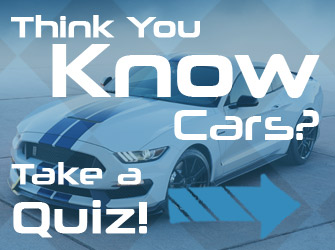Electric Cars Can Rock

Many car enthusiasts make fun of electric cars, calling them slow, boring, transportation appliances. Sure, some of them are, but electric vehicles are the most likely future method of personal transportation. Gearheads and hot-rodders worry about electric vehicles being the end of the road, but clean electric performance can bring on a new era of affordable high performance.
Let’s start off with what is already known: not every electric car has to have the fun and charisma of a Nissan Leaf. Unfortunately, that is the stereotype. Tesla is proving another way, with the Roadster, Model S, and Model X. All are stylish, fun to drive vehicles offering fantastic value and luxury for the price. There are a number of ways Tesla shows us the performance car future.
First, all the batteries are beneath the cabin, creating a super low center of gravity. Even a horizontally opposed (boxer) engine sits taller than a battery stack. Go with the more common inline or v-configuration, and you have a car that cannot handle as well as an electric car, all other things being equal. We are a very short time away from electric sports cars being the dominant sports cars. While an electric Porsche 911 is sacrilege to some enthusiasts, they might get over it after pulling a 1.5 g corner on street tires.
Then there is everyone’s favorite force: torque. A big block V8 has a lot of torque, but even a huge Chevy 572 has wimpy torque off-idle, and doesn’t impress until 3,000+ rpm. Electrics can rip off the line due to there being no need to spin up. Electric motors have 100% torque available at zero rpm. Meaning, hit the accelerator, all the torque is instantly going to the wheels. Even high-end Ferraris, with their excellent throttle response, can’t match that level of performance. With a throttle body butterfly opening, vacuum decreasing, the crank and pistons spinning faster, and the computer recognizing it and adding fuel, there is just no way for a mechanical system to compete with an electrical system that reads accelerator pedal position and instantly adds power. It’s the difference between the speed of sound and the speed of light. Both are fast, but when it comes down to it, which would you choose?
Then there are the other considerations of a sporty daily driver. Yeah, certain exhaust notes are like a mechanical symphony, but sometimes, like after a hard day at work, you just want a quiet commute home. With zero engine noise, and vastly reduced wind noise, get yourself a set of low-noise tires and you have a nearly silent vehicle. A quiet ride can do a lot to help quiet the mind. Also, consider that you will NEVER stop for gas. Maintenance costs are also reduced, as there are no oil changes, air filters, or spark plugs to eat away at your hard earned cash.
Last, consider that modifications and upgrades are still a possibility. Just as laptops and tablets get lighter and faster every year, so will electric vehicles. It will be possible to swap out that battery pack for a lighter and denser unit, as Tesla has already demonstrated for owners of their Roadster. It’s even a possibility to do your own swaps. For example, the Model S P85D is an incredible performer, with dual motors and the equivalent of 691 horsepower. However, the D gets this number from a 221 hp front motor, and a 470 hp rear motor. Gearheads will do some quick math, and pull that front motor, swapping in another rear motor from another donor car. Suddenly, your Tesla goes from an impressive 691 hp, to an absolutely insane 940 hp super sedan. And this is just with factory parts. Imagine what the aftermarket will do.
Just as EFI, or CAFE requirements changed the vehicles we drive, so will electric drivetrains. And just as hot rodding survived – and thrived on – those previous changes, our performance future with electric cars looks very bright. And very fast.



















































